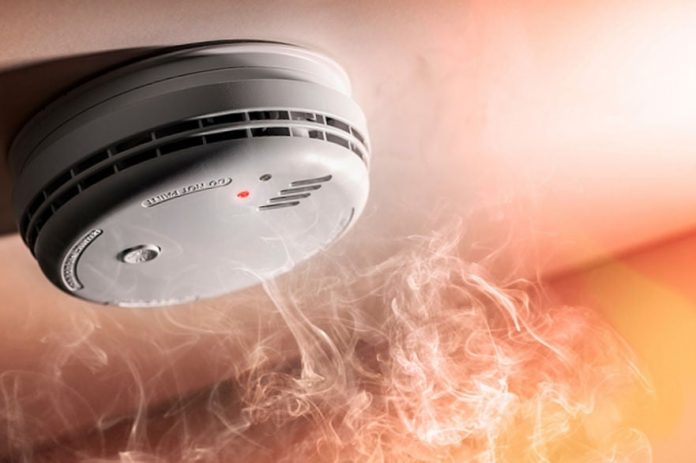Smoke Sensors On Steep Ceilings
♦ Smoke Sensors On Steep Ceilings – What’s the best way to install smoke detectors on step ceilings? We are working on some architecturally-designed houses with steeply-pitched ceilings that make installing them really tough. Do we have some wiggle room?
A: The ideal location for a smoke detector is on horizontal ceiling a reasonable distance away from walls – 12 inches at least. Make sure these sensors are closer than 1m to the roof’s peak. You don’t want to install smoke detectors in the dead zone – the still air pocket where ceiling and walls join – custom brackets may be required.
If there’s no way to get to the ceiling, you need to install the smoke sensor no lower than 12 inches from the ceiling and 6 inches below it for preference. If cabling is impossible go with wireless and if you go wireless in hard to reach places, choose products with a very long battery life.
Sloping and vaulted ceilings of various types are going to need multiple smoke sensor installations. Dead air spaces are to be avoided. These are typically found in the peak of cathedral ceilings or A-frame ceilings. Functional ranges for smoke alarms are between 5C and 45C. Avoid areas with higher temperatures – external metal sheds, especially in elevated locations.
It’s also a good idea to stay away from water heaters and unflued space heaters and open fireplaces. You need to be 6-7 metres from an unflued gas heater and that still may not be enough. In early winter, gas heaters that have not been used for a while will initially burn some dust, causing smoke particles to generate false alarms. Sometimes gas supplies may incorporate contaminants, and these might generate smoke particles from time to time.
You should also avoid dusty, dirty areas or locations prone to insect infestation – if the sensor comes with dust cover this could be deployed using it during periods of construction. Some smoke alarms can be fitted with an insect screen, and this might ensure it does not become a home of cockroaches in summer.
Try to avoid areas with strong air currents or fresh air flows, these drafts may prevent internal smoke from reaching the sensor and install photoelectric smoke sensors further than 1.5 metres from fluorescent lights – they emit EMI and RFI signals that can trigger sensor circuitry in generating alarms.
Smoke sensors should not be installed in places where their audible alarm can’t be heard – especially if they can’t be heard from sleeping quarters. Assessing the ideal location from this point of view is organic and may require hardwiring sensors in series, using smart device apps to deliver alarm notifications, or the locating of a smoke sensor in places fire ignition is unlikely but which is the furthest place from a bedroom a sleeper might be woken by a detector siren – for instance, an adjoining hallway or an internal landing.
#SEN #SENnews #security #electronics











